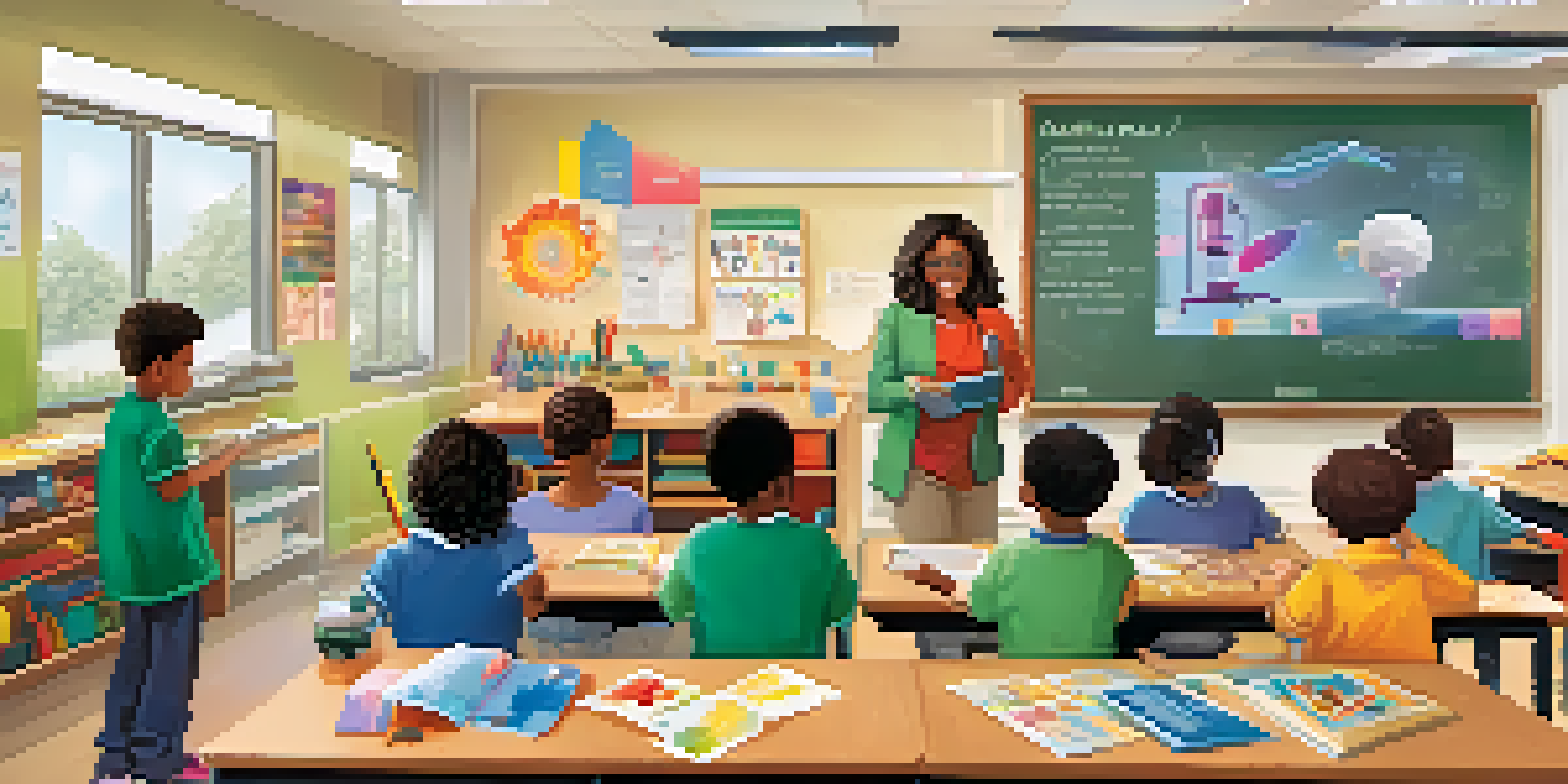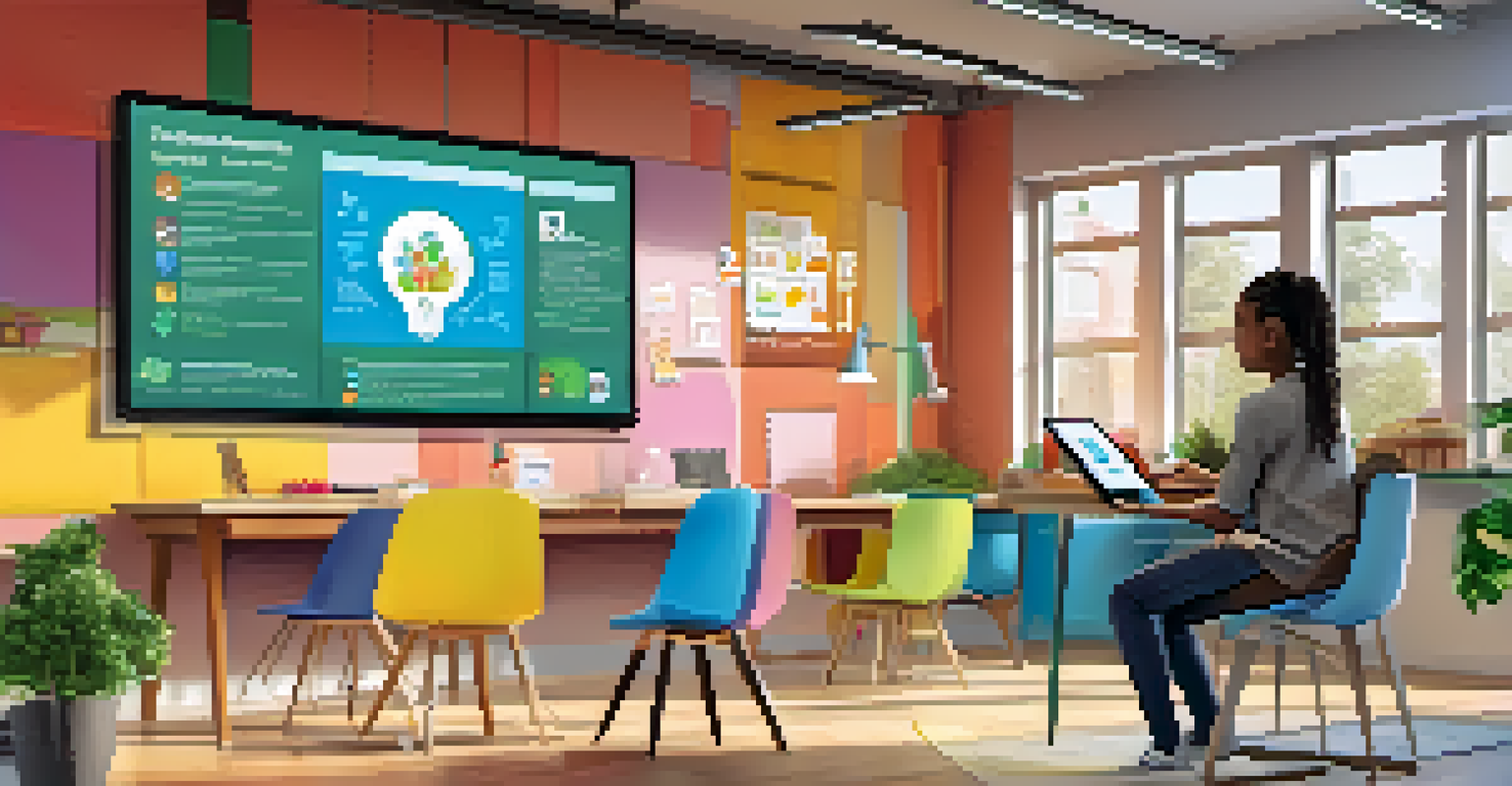Learning Styles: Tailoring Education to Individual Needs

What Are Learning Styles and Why Do They Matter?
Learning styles refer to the unique ways individuals absorb, process, and retain information. Understanding these styles can significantly enhance teaching methods and educational outcomes. Just like a recipe might call for different ingredients to create a delicious dish, education needs to adapt to the varied preferences of learners.
Tell me and I forget. Teach me and I remember. Involve me and I learn.
For instance, some students might grasp concepts better through visual aids, while others excel through hands-on activities. Recognizing these differences allows educators to tailor their approach, making lessons more engaging and effective. When students learn in a way that suits them, their confidence and interest in the subject often grow.
Moreover, embracing diverse learning styles fosters an inclusive environment where every student feels valued. This not only enhances the learning experience but also prepares students for collaborative environments in their future careers. After all, the world thrives on diversity, and education should reflect that.
The Major Learning Styles Explained Simply
While there are various theories around learning styles, three primary categories often emerge: visual, auditory, and kinesthetic. Visual learners benefit from diagrams, charts, and written instructions, while auditory learners may find lectures and discussions more effective. Kinesthetic learners, on the other hand, thrive through hands-on experiences and movement.

Imagine a classroom where a teacher uses videos for visual learners, discussions for auditory learners, and experiments for kinesthetic learners. This multi-faceted approach not only caters to different preferences but keeps the entire class engaged. It’s like hosting a party where everyone has a role that plays to their strengths.
Diverse Learning Styles Enhance Education
Understanding and adapting to various learning styles can significantly improve teaching methods and student engagement.
Understanding these styles can empower educators to create lesson plans that incorporate various methods. By doing so, they can ensure that each student has a chance to shine, making learning a collaborative journey rather than a competitive race.
Identifying Your Learning Style: A Personal Journey
Determining your learning style can be as simple as reflecting on past educational experiences. Take a moment to think back to when you felt most engaged or retained the most information. Did you prefer watching videos, listening to lectures, or participating in group projects? This self-awareness is the first step toward tailoring your educational experience.
The only person who is educated is the one who has learned how to learn and change.
There are numerous quizzes and assessments available to help pinpoint your learning style. However, these tools are just starting points. The real insight comes from observing how you interact with different types of information and which methods resonate with you over time.
Once you identify your preferred learning style, you can actively seek out resources and strategies that enhance your learning. This proactive approach not only makes studying more enjoyable but also empowers you to take control of your educational journey.
The Role of Educators in Adapting to Learning Styles
Teachers play a vital role in recognizing and adapting to diverse learning styles within the classroom. By observing their students and gathering feedback, educators can modify their teaching strategies to better cater to individual needs. This adaptability is crucial in creating a supportive learning environment.
For instance, instead of sticking to a single teaching method, educators might incorporate a mix of lectures, group discussions, and practical exercises. This not only keeps the classroom dynamic but also ensures that every student has a chance to engage with the material in a way that suits them best.
Personalized Learning Boosts Success
Tailoring educational approaches to individual learning preferences leads to higher retention and a love for learning.
Furthermore, professional development opportunities can help teachers stay informed about the latest research in learning styles. By continuously honing their skills, educators can create a more inclusive and effective learning atmosphere, making education a collaborative effort.
The Benefits of Personalized Learning Approaches
Personalized learning approaches offer numerous benefits, including improved retention and engagement. When students learn in ways that resonate with them, they are more likely to stay motivated and interested in the subject matter. This is akin to finding the right workout routine that keeps you energized and healthy.
Additionally, personalized learning can address gaps in understanding, allowing students to progress at their own pace. This flexibility helps prevent feelings of frustration or boredom, which can negatively impact learning. Instead, students feel empowered to take ownership of their education.
Ultimately, tailoring education to individual needs creates a more positive and productive learning experience. As students thrive, they develop a love for learning that extends beyond the classroom, preparing them for lifelong success.
Challenges in Implementing Learning Styles in Education
Despite the benefits, implementing a learning styles approach in education can present challenges. One significant hurdle is the misconception that individuals have a fixed learning style. In reality, most people can adapt to different methods depending on the context and subject matter.
Another challenge lies in the resources available to educators. Not all schools have the necessary materials or training to effectively address diverse learning styles. This can hinder teachers' ability to create a customized learning experience for their students.
Challenges in Implementing Styles
Despite the advantages, misconceptions and resource limitations can hinder the effective application of learning styles in classrooms.
However, by fostering a culture of continuous improvement and collaboration, educators can overcome these obstacles. Sharing best practices, leveraging technology, and engaging with the community can enhance the educational landscape, ultimately benefiting students.
Looking Ahead: The Future of Learning Styles in Education
As we look to the future, the concept of learning styles is evolving. New research continues to emerge, highlighting the importance of a holistic approach to education that considers various factors beyond just learning styles. This includes emotional intelligence, motivation, and social dynamics.
With the rise of technology in education, personalized learning experiences are becoming more accessible. Online platforms and educational apps allow students to learn at their own pace and choose methods that resonate with them. This trend supports the shift towards a more individualized approach in education.

Ultimately, the goal should be to create a learning environment that nurtures each student's unique abilities and preferences. By embracing this future, we pave the way for a more inclusive and effective educational system that prepares students for success in a diverse world.